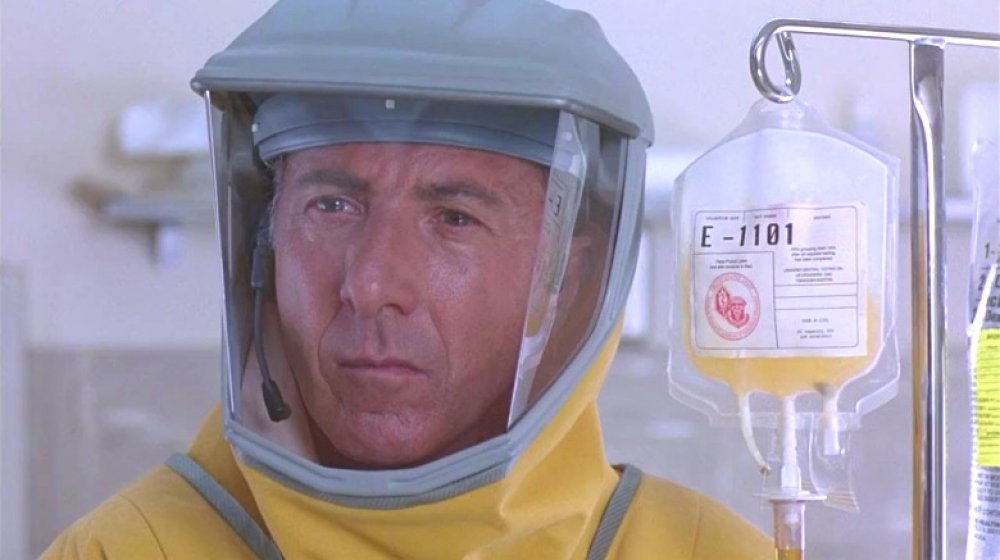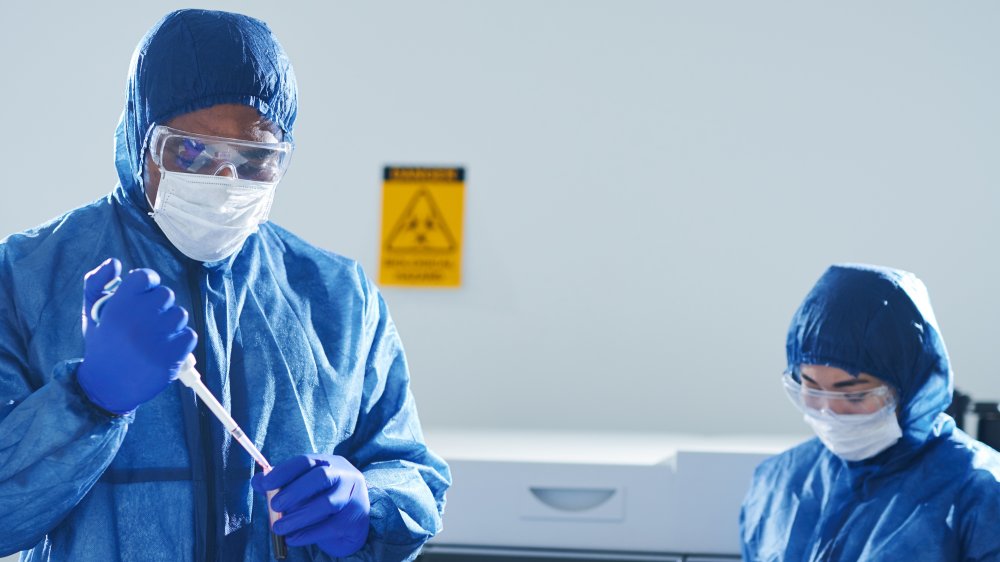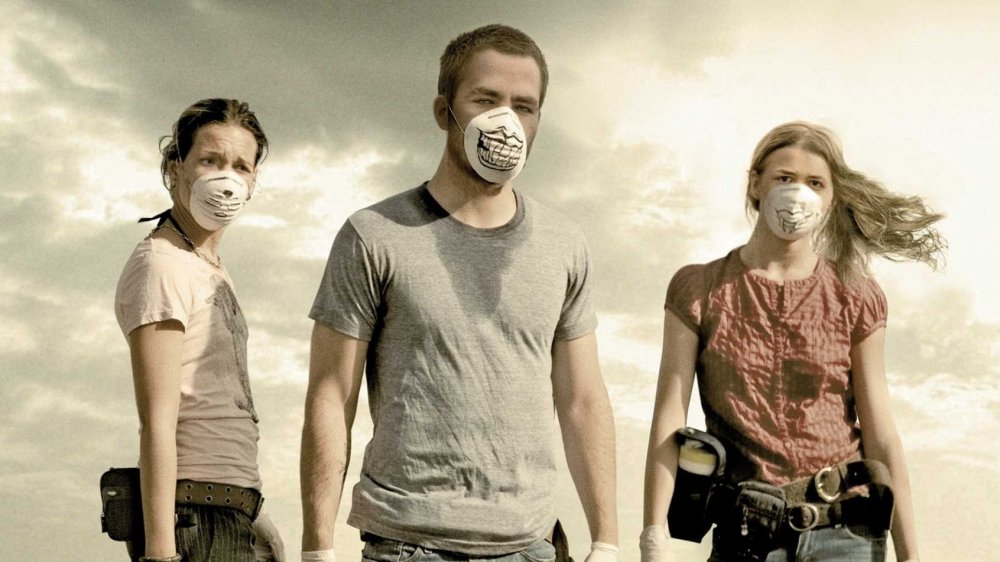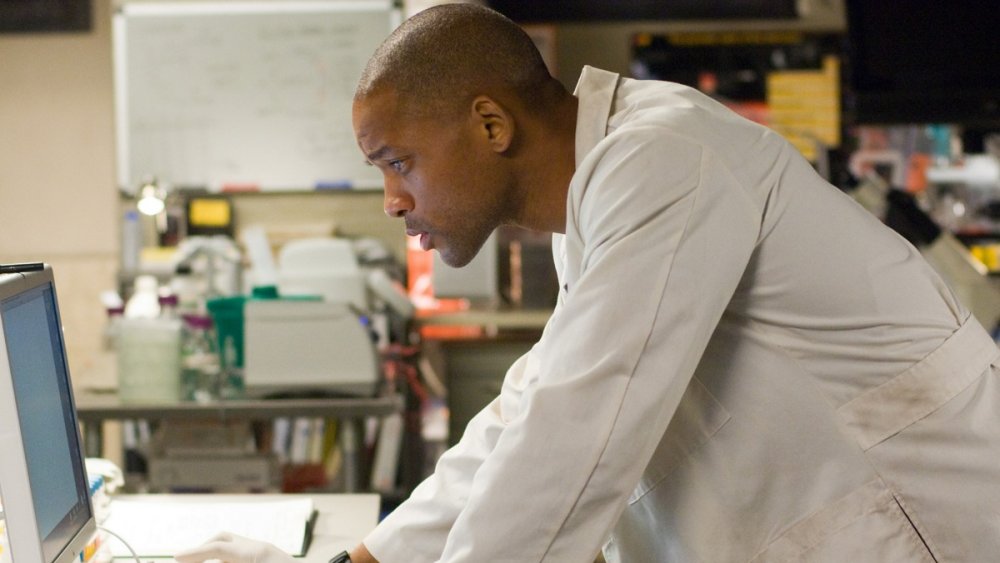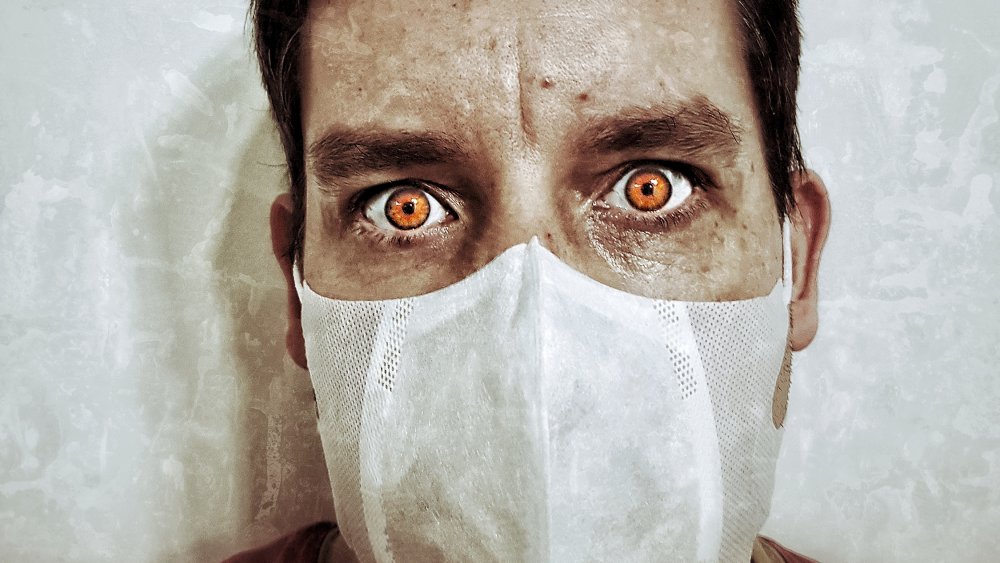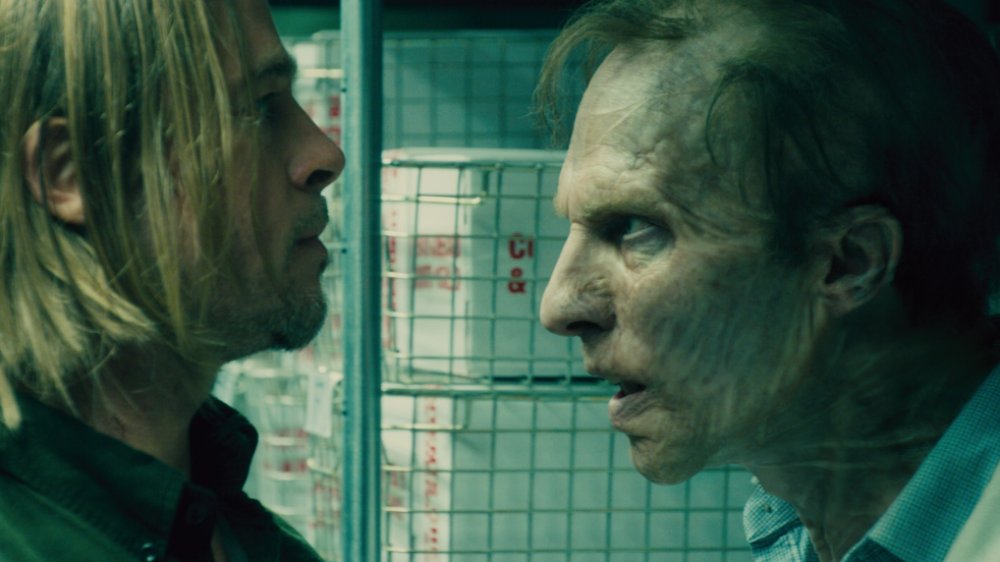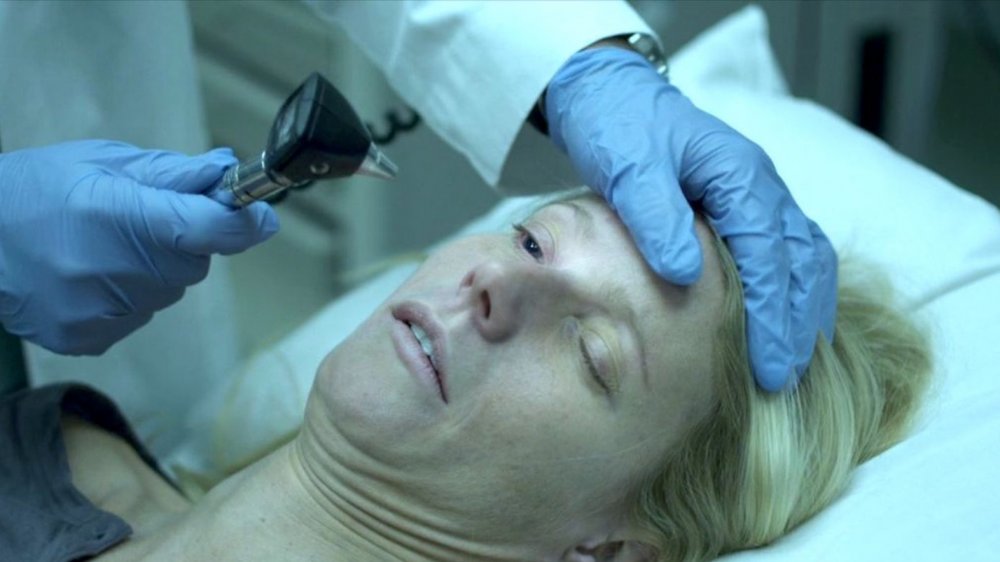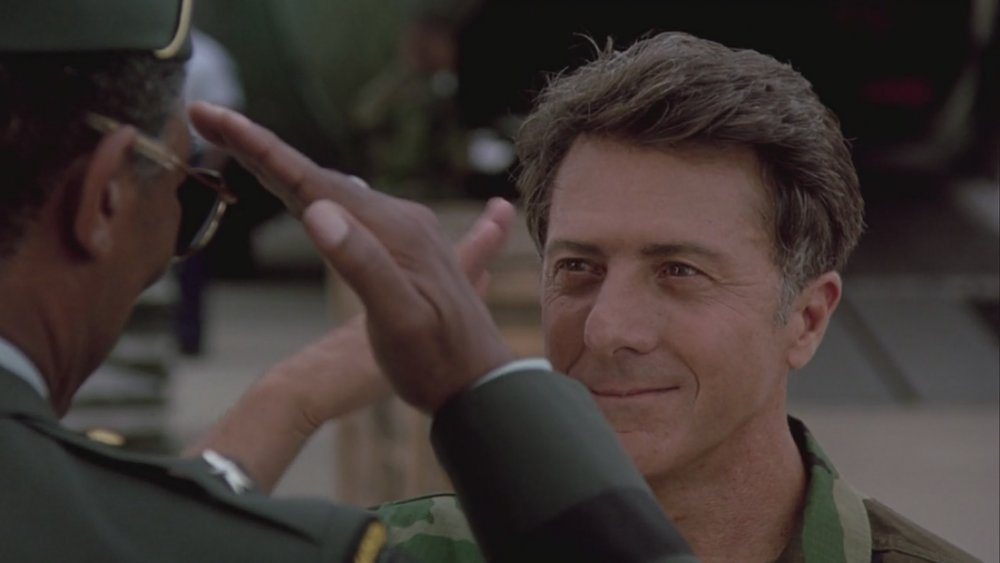Things Movies Get Wrong About Virus Outbreaks
Maybe it shouldn't be surprising that an industry that regularly forgets you can't hear anything in space or that guns have finite ammunition would get the science wrong in films whose entire premise depends on, well, science. Hollywood loves making movies about killer viruses, zombie viruses, alien viruses — just, you know, viruses. And why not? Pandemics are terrifying and it's always fascinating to track the end of the world step by agonizing step. Putting those two tropes together usually results in something at least entertaining, and frequently really great.
One thing it rarely results in is scientific accuracy. Even the movies about virus outbreaks that make a real effort at showcasing real science have to make some sacrifices for drama and pacing — and most movies about pandemics and viral doomsdays don't bother making that effort. Here are the things that almost every movie ever made gets wrong about virus outbreaks.
Viruses won't kill you immediately
People slowly dying of a viral infection isn't very cinematic. Hollywood needs its thrillers to be kind of thrilling, so it isn't surprising they tend to jazz up how viruses typically work. In the 1995 film Outbreak (pretty much Ground Zero for bad viral science), the fictional Motaba virus (based loosely on Ebola) isn't just 100% fatal, it also has an incubation period measured in hours and kills its victims within a day.
While it's true that some viruses can kill you in about a day, there's a delicate balance between speed and viability for a virus. In short, viruses that kill you super fast not only destroy their own host (and thus destroy themselves), they can't spread effectively either, so outbreaks tend to be pretty limited. According to the third edition of Principles of Virology, even the fastest viruses tend to have incubation periods ranging from several days to several years, and the illness part can last days, weeks, or months. And fatality rates for most pandemics aren't nearly as lethal as Hollywood likes them to be — World Health Organization statistics put the coronavirus sweeping the world around a 2% fatality rate, although that's an early estimate and is likely too high. The H1N1 flu (also called "swine flu") was less than 0.1% fatal, while real-life Ebola is 40% fatal. That's pretty terrifying, but not terrifying enough for a Hollywood thriller.
Epidemics aren't that fast
Your average movie is about two hours long, which isn't a whole lot of time to get to the part where the world ends in a viral apocalypse. So it's understandable that screenwriters favor speed over scientific accuracy. The movie 28 Days Later is a prime example of how Hollywood likes its viral outbreaks: fast and furious, with the world going from hunky dory to burned-out shell in just under a month.
This obsession with speed also goes for the process of infection — in 28 Days Later, victims go from exposure to full-on infected almost immediately, and even less fantastic films often depict people going from exposure to dead in a few days or hours. But the fact is it takes about a full minute for your blood to circulate throughout the body, so even if we stipulate a virus could get in and immediately start hijacking your cells for its own ragey purposes, it probably takes a minimum of a couple minutes to do so.
And in reality, pandemics take a long time, too, and so far not one has managed to actually destroy the world. But the Centers for Disease Control and Prevention (CDC) notes that the 1918 flu pandemic took a year to play itself out, and the AIDS epidemic slow-burned for years. Even something like the Black Death took four years to eventually burn itself out, and while it was devastating, it didn't end civilization.
Vaccines for viruses can't be created super quickly
Science in Hollywood movies is usually depicted as either stuffy boring stuff or Rick and Morty-esque near-magic that can solve any problem. One inconvenient fact about virus outbreaks is the length of time it takes to develop a vaccine, so most films depict this happening unbelievably quickly. Many movies will have a vaccine developed in a few days (or even hours), and even the film Contagion, which is largely praised for its scientific accuracy in depicting a fictional pandemic, shows scientists isolating the pathogen in less than two weeks and creating a viable vaccine for it in a few months.
It's thrilling, and it seems like a reasonable timeframe — but it isn't. In reality, the College of Physicians of Philadelphia reports it can take up to 15 years to develop a vaccine, and even under emergency conditions it can take a whole year. Creating a vaccine requires studying the pathogen, identifying the antigens that will help combat it in the body, then testing to ensure that what you come up with isn't worse than the pathogen you're trying to destroy. After that, you need to manufacture the vaccine in significant quantities and actually get it to the population. Hollywood prefers to hit the Easy Button on this process. This makes sense for dramatic purposes because you don't want the last hour of a movie to be just one long shot of people working in a lab.
Wearing surgical masks won't protect against a virus
Movies often act like slapping a surgical mask on your face makes you invulnerable to viral threats. In the film Carriers, everyone walks around with pretty basic surgical masks on, and they're fine until they start making some pretty obvious mistakes like picking up clearly infected people and imagining that some plastic and duct tape can stop a plague.
Viruses tend to be tiny, and Dr. William Schaffner, an infectious-disease specialist at Vanderbilt University, says the masks that can actually protect you make it incredibly hard to breathe. Regular surgical masks won't do much for an airborne virus but are often treated as nearly magical in their ability to ward off disease. Masks aren't useless — they can protect you from airborne globs of snot, which isn't nothing — but putting one on doesn't mean you can walk into a hospital ward full of sick people and be fine.
Some movies do better depicting large-scale personal protective equipment, like full-body suits with helmets that use positive air pressure to protect people. But even when they show scientists and doctors using such equipment, if you pay attention you'll likely see a million other mistakes as noted by CDC ecologist Brian Amman, like shaking hands or walking from an infected room to another area without decontaminating.
When viruses go airborne
In the movie Outbreak, Colonel Sam Daniels (Dustin Hoffman) is confused when the ebola-like Motaba virus seems to be infecting people who haven't had any contact with other infected people, which should be impossible because Motaba is transmitted via physical contact and exchange of bodily fluids. Then he has one of those Hollywood genius moments (which ironically comes after he has blithely violated the quarantine room and roamed the hospital spreading germs like the exact opposite of a genius). He notices all the ventilation ducts in the room, stares at the camera in shock, and says "It's airborne!" In other words, the virus has mutated. (Cue dramatic music.)
It is a dramatic moment, but it's also complete hooey. Viruses mutate all the time — that's how new forms of diseases keep cropping up and how viruses that usually afflict animals can cross over to the human population. But what they don't do is start off being transmitted in one way (say, mosquito bite) and then suddenly go airborne via sneezing. According to renowned virologist Dr. W. Ian Lipkin, it just doesn't happen.
There's no magic blood to cure viruses
One challenge a movie about a virus outbreak faces is how to resolve things. You imagine a disease that burns through the population, killing most and destroying civilization. Then you imagine a few survivors struggling to stay sane and avoid infection. How can you wrap things up fast so the story can end on an upbeat note? The typical answer is magic blood.
In the film I Am Legend, a virus that basically turns people into vampire-zombies leaves Dr. Robert Neville as the only man alive. Neville is somehow immune to the virus, and he uses his own blood to develop a cure. The only problem, according to virologist Dr. W. Ian Lipkin, is that it doesn't make any sense. A genetic immunity like that can't be transmitted to others, and if Neville's immunity allowed him to produce antibodies that would make this possible, first he'd have to be infected so his body could produce those antibodies.
And even if we pretend that happened, films like this and 1995's Outbreak get the volume needed all wrong. According to Dr. C.J. Peters, a field virologist featured in Richard Preston's best-seller The Hot Zone, even if you can use the blood or plasma of something to effect a cure you'd need a lot more than a single animal or person could supply.
Old and busted: Patient Zero
If you watched Dawn of the Planet of the Apes, you might have noticed a familiar phrase when the fictional virus ALZ-113 (aka simian flu) is being explained: "Patient Zero." This phrase entered the general consciousness during the early years of the AIDS crisis, usually referring to one flight attendant who was (incorrectly) portrayed as wildly promiscuous and more or less responsible for the spread of the disease in the United States. The idea that all viral outbreaks can be traced back to a single Patient Zero is a simple concept that seems to make sense, so it remains part of our vocabulary when discussing pandemics.
As with most simple concepts, however, Patient Zero is completely misunderstood. In a recent article in the journal Nature points out, the whole theory is wrong, as there were likely plenty of other HIV-infected people at the time, especially considering the lengthy incubation period of the disease. And as investigative journalist Dina Fine Maron points out, disease vectors are just too complex for a single person to be blamed. HIV probably arrived in the U.S. much earlier, possibly as early as 1971. In other words, while Patient Zero sounds appropriately ominous for a movie, it's trash science.
Viruses aren't that intelligent
Virus outbreaks are terrifying, of course, but they make for wimpy film villains because they're practically invisible, can't make lengthy dramatic speeches, and transform otherwise charming actors into shuffling zombies or, you know, corpses. Some movies try to solve this by making their fictional viruses kind of smart.
In World War Z, for example, Brad Pitt figures out that the infected will completely ignore people who have a fatal disease. There is some logic to this, as a virus' main goal in life is to replicate. A dying host would be a poor choice, and in nature, feigning death or infirmity to confuse predators is fairly common. But as biophysicist Scott Forth at Rensselaer Polytechnic Institute in Troy, New York, points out, the other problem here (aside from imagining that the virus is basically a mob of tiny supervillains) is that the virus would need to imbue its host humans with superpowers. The virus needs the host human to smell disease on the dying person, and we humans just don't smell all that well.
Viruses don't usually cause dramatic death scenes
In Hollywood movies, there's no such thing as a boring death scene. When any character — especially if they're portrayed by an A-lister — dies in a Hollywood epidemic, it's usually pretty exciting and kind of gruesome. The goal is drama, after all. There'll be mouth-foaming and screaming, twitching and ... fluids. Sometimes followed by transformation into a rage-fueled zombie, but that's beside the point. When Gwyneth Paltrow's character kicks it in the film Contagion, for example, her horrified husband watches her twitch and writhe as medical professionals look on more or less helplessly. (Even more dramatic is the bit later when they peel Gwyneth's face off during the autopsy.)
But as former emergency room physician and medical blogger Pat Salber notes, most deaths from viruses like the flu stem from secondary factors, like bacteria getting into the lungs to cause pneumonia or getting bacteria into the blood to cause sepsis or because the virus exacerbates existing weaknesses like diabetes or asthma. That's why most deaths from any viral outbreak happen among the elderly and the already ill, not the young and healthy. In other words, most people die quietly, after lingering unconscious for a while, which isn't very cinematic.
The myth of the lone genius
Audiences like to see extraordinary people accomplishing extraordinary tasks, whether it's a spunky kid from Queens who gains a bunch of spider powers and then joins The Avengers or a brilliant virologist who single-handedly figures out how to cure a deadly plague. A whole bunch of films about various terrifying viral outbreaks feature a single, heroic scientist who more or less saves the day, whether it's Dr. Neville in I Am Legend using his own immune blood to cook up a cure, or Colonel Sam Daniels, MD in Outbreak heroically risking his life to develop a cure. Even the relatively grounded and realistic Contagion features a single scientist developing a vaccine (which she tests on herself). Cue the dramatic music and the audience applause.
Reality is messier and less dramatic, of course. Abigail Zuger, M.D., Associate Clinical Professor of Medicine at Icahn School of Medicine at Mount Sinai in New York City, describes modern medicine — and especially public health efforts — as a "team sport." The idea of a single genius saving the day is fun, but almost totally inaccurate. Reality would be large teams of scientists working on these outbreaks, following some pretty rigid protocols when it came to testing — and no one person would be responsible for the solution.
You can forget about instant access to virus data
The movies always like to imagine that our government agencies and bureaucracies are incredibly well-funded, with access to cutting-edge technology and instantaneous data. Even when the whole world is collapsing in a movie like World War Z, Brad Pitt knows exactly where to go as he chases down clues. In movies like Contagion, the scientists are able to pop up sophisticated models of the virus' genome and show nifty videos where every single case of infection pops up on a world map, and computers offer instant, terrifying projections of just how fast the world will be consumed in a viral apocalypse. (We won't even mention the way the Centers for Disease Control and Prevention is depicted as having better computers than Star Trek in The Walking Dead.)
Dr. David A. Ross, the president and CEO of the Task Force for Global Health, says the reality is a messy process where some info comes in on paper, the rest digitally — and all of it in non-standard forms requiring sorting and manipulation. Which means the likelihood of instant, easily-understood computer graphics and reliable models showing precise spread patterns is very, very low. And that's assuming the data isn't coming from a secretive, paranoid totalitarian country with an interest in fudging all the numbers. Boy, that would sure make it worse.
Zombies!
Maybe we don't need to point this out explicitly, but zombies resulting from some sort of virus are kind of ... unlikely. Movies sure do love the idea of a "rage virus" or a zombie virus that reanimates us or turns us into mindless killing machines — and audiences love that idea, too. Films like 28 Days Later and World War Z play with the idea that zombies, which are clearly fiction, could become reality if the right pathogen mutated in the right way. But nope, it's pretty much all fiction.
It's true that rabies — the most frightening of all viral threats — is theoretically capable of producing a "rage virus"-like pandemic, according to virologist Samita Andreansky. But it would need to be a lot more contagious than it currently is to pose a global threat. Rabies can only spread through physical contact, usually a bite from an infected creature. And it has a very long incubation period of up to a year. A true zombie-like experience would require a lot of work to make happen. In his book The Zombie Autopsies, Dr. Steven C. Schlozman imagined a scenario where scientists fuse a protein known as a prion to an airborne virus, resulting in a "zombie" disease. The big takeaway from Schlozman's book isn't that such a plague is possible, but that it would be incredibly unlikely to ever happen.

